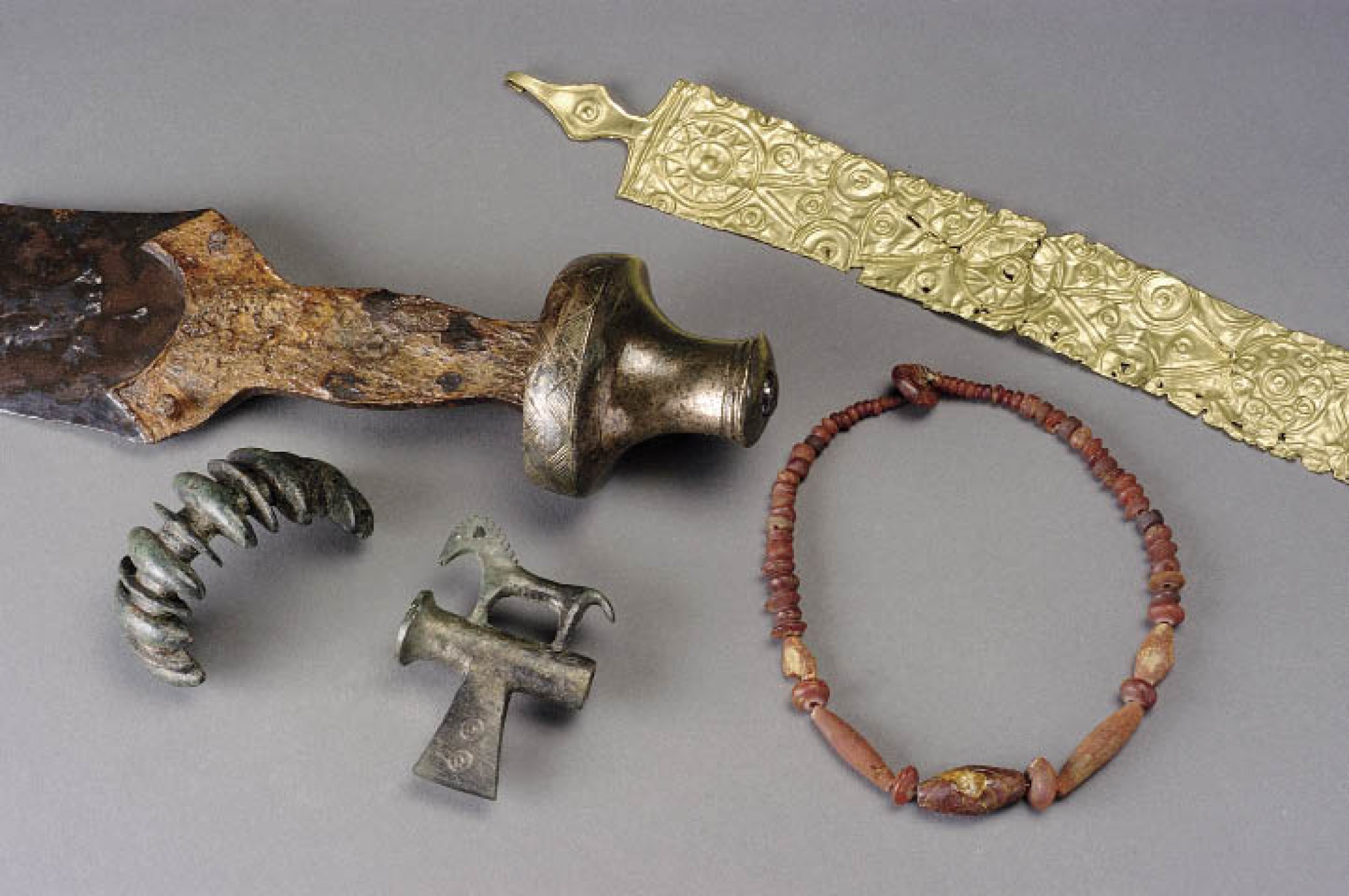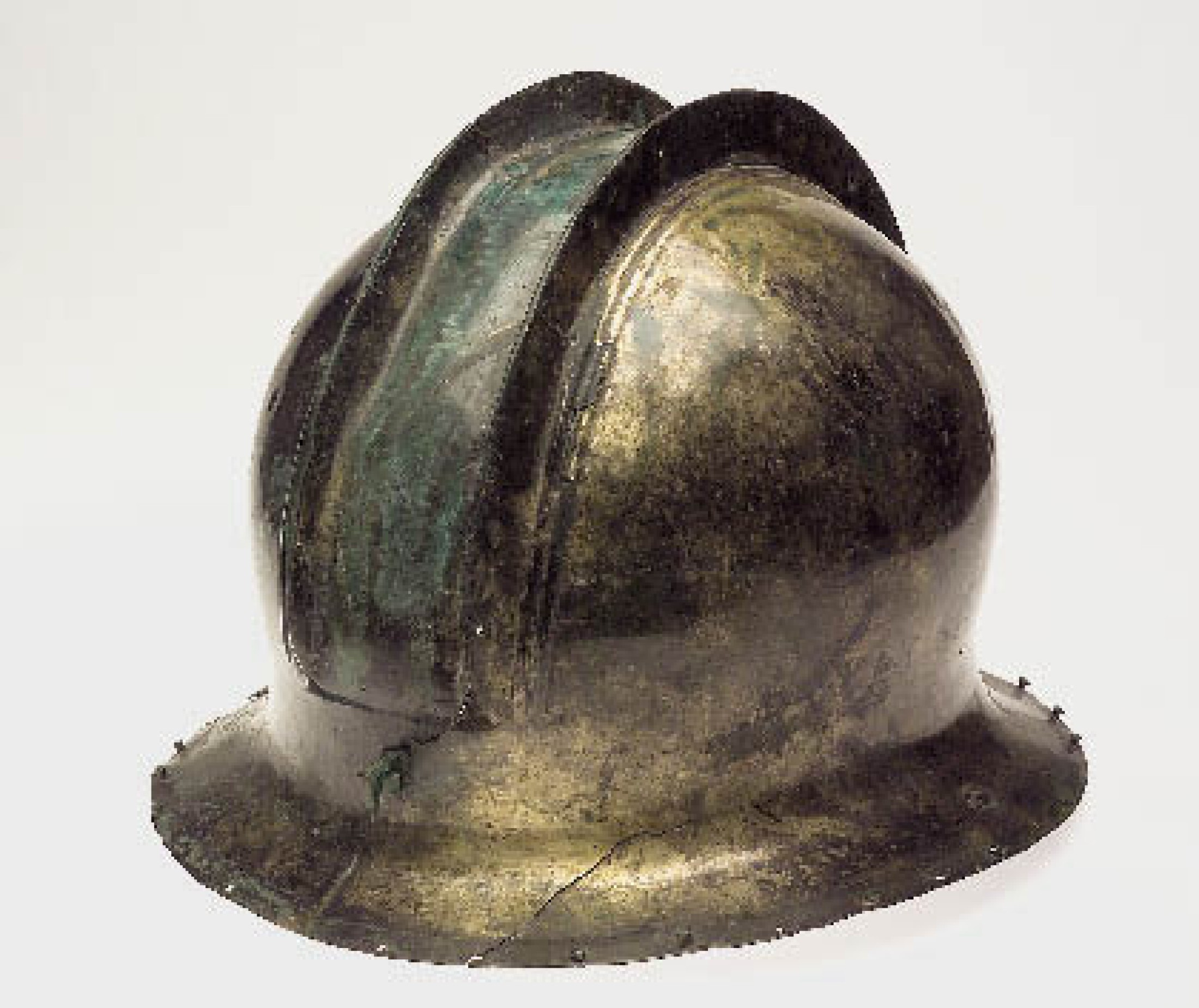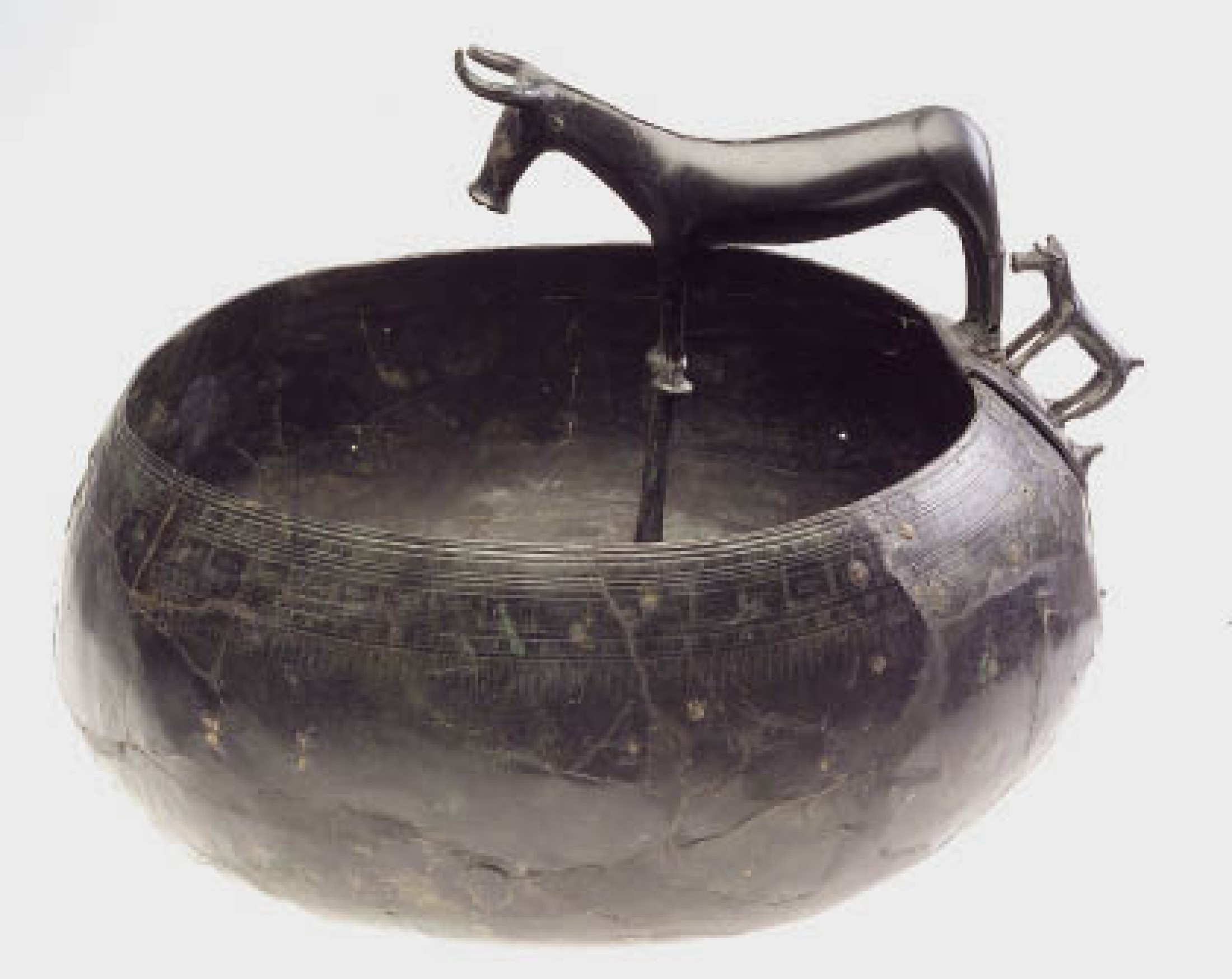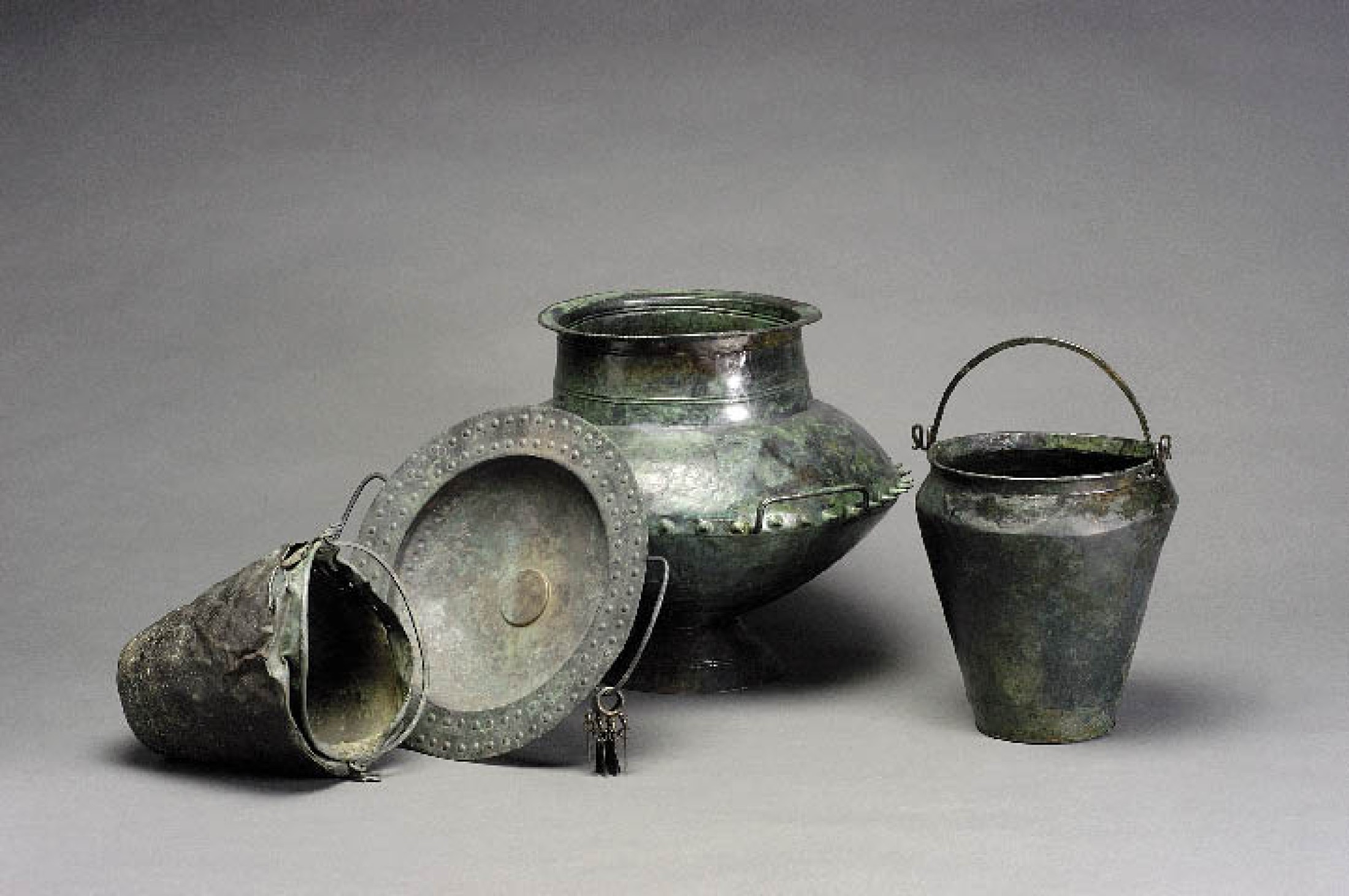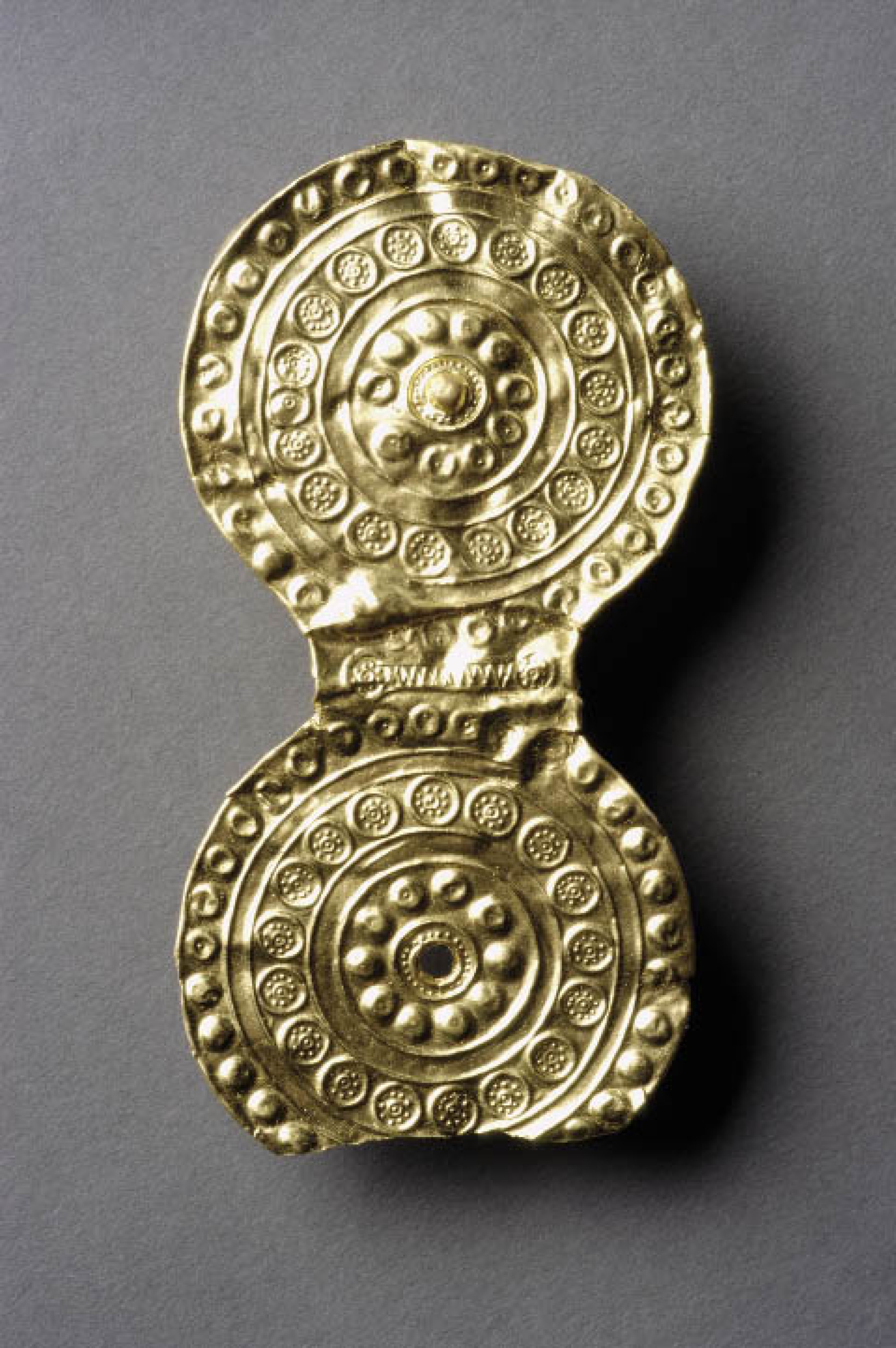Burial objects as indicators of social status
Since the first excavations undertaken by Ramsauer in 1846, around 1500 graves have been unearthed in the prehistoric cemetery, among them ‘luxury burials’ that differ from the typical graves in several respects. These prestige burials fall into three main groups:- ‘Rich’ graves with generous furnishings
- Graves with offerings made of valuable materials
- Graves containing special items (‘Exotics’, unique specimens)
Graves with valuable burial objects
Graves with valuable raw materials
Graves with object of special interest
Decayed burial objects
Graves with valuable burial objects
There is a considerable number of ‘rich’ graves in Hallstatt. Compared with other large cemeteries of the time, the number
of lavishly furnished graves is well above average. Basically, the Hallstatt cremation graves are ‘better’ furnished than
the inhumation graves. This applies to cremation graves of both men and women, but not to the very few urn burials, which
are rather modestly furnished with pots for food and drink and some accessories.Graves with valuable raw materials
Precious materials such as gold, as well as amber, glassr ivory were used, though rarely, for ‘everyday’ objects that embellished not only everyday life, but also the last resting place of the Hallstatt people. Among such luxury items are glass jars that came to Hallstatt across the Alps, over trade routes from the Caput Adriae region. In the Early Iron Age, ivory was a highly valued, rare and most precious material. A number of elaborately carved ivory items were uncovered in Hallstatt, among them the beautiful rounded butts of the typical Hallstatt sword, usually made of wood or bronze. Truly outstanding pieces were discovered in the Hallstatt cemetery, additionally adorned by amber inlays. We now know that the ivory used probably came from Africa and travelled to Hallstatt via several intermediate stops.Graves with object of special interest
The category of ‘luxury items’ not only refers to precious raw materials, but also to particular forms, with exceptional objects possibly coming from far away. Both groups overlap of course, because exotics are often manufactured from rare or precious materials. Many of these very special items were imported as finished products.
Decayed burial objects
However, the graves only yielded the imperishable items meant to display wealth and luxury. Nearly everything that was made of organic materials has rotted away. We have little knowledge of cloth and clothing, but individual finds from princely graves of the Hallstatt period bear witness to a wide range of precious textiles and elaborate garments. There is hardly any evidence of ‘exotic’ foodstuffs; we can for the most part only deduce their existence from the containers meant to transport the goods. We know for instance that wine was exported from the Mediterranean region to the Hallstatt Culture area, because Greek amphorae and mixing vessels were discovered in several major places in Central Europe.(Kern, A.)

